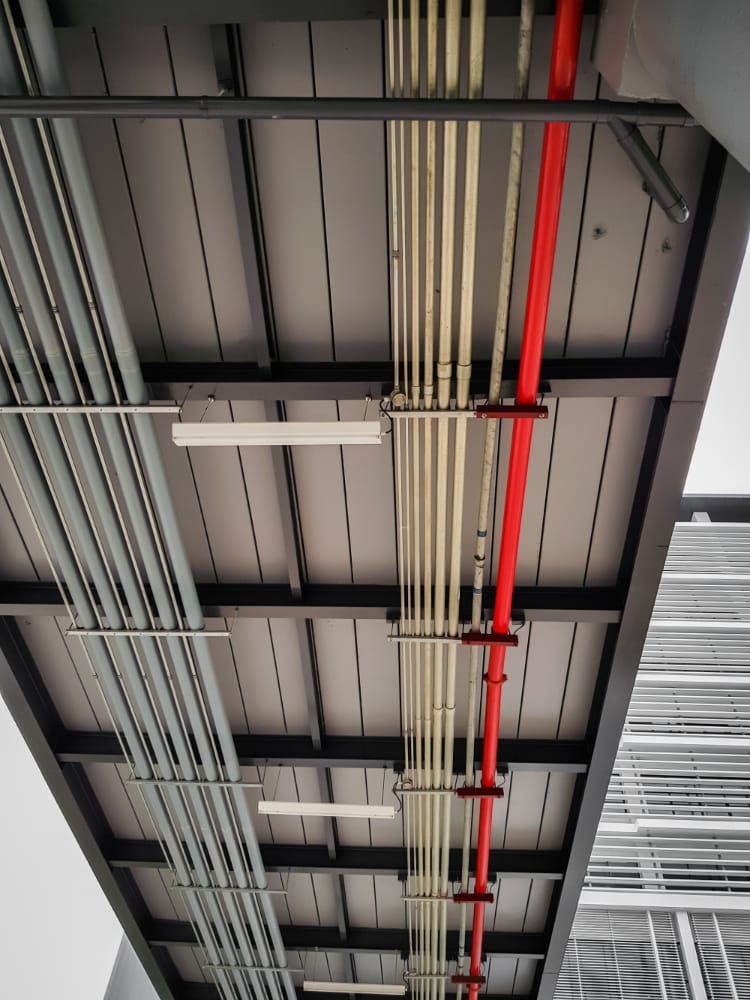When a fire breaks out, every second counts — and relying solely on alarms or sprinklers isn’t always enough to prevent structural damage or loss. That’s why many building owners and managers are turning their attention to a passive fire protection system, a critical but often overlooked part of comprehensive fire safety planning. While active systems like sprinklers work to control flames once they ignite, passive systems are designed to contain fire and smoke at their source, helping to protect lives, minimize property damage, and give emergency responders the crucial time they need to act.
Table of Contents:
- Understanding Passive Fire Protection Systems
- Main Components of Passive Fire Protection
- Benefits of a Well-Designed Passive Fire Protection System
- Conclusion
Understanding Passive Fire Protection Systems
A Passive Fire Protection System (PFP) refers to the materials and construction techniques integrated directly into a building’s structure to prevent the spread of fire and smoke. Unlike active systems such as alarms, extinguishers, or sprinklers that require manual or mechanical activation, passive systems are always in place and operational.
At its core, a passive fire protection system works by compartmentalizing a building — dividing it into sections using fire-resistant materials and barriers that can withstand high temperatures for a specified period. This slows down fire progression, limits smoke movement, and helps maintain the building’s structural integrity long enough for safe evacuation and emergency response.
Examples include fire-resistant walls and doors, fireproof coatings on structural steel, firestopping materials that seal gaps in walls and floors, and fire-rated glass or partitions. Together, these components form an invisible yet powerful line of defense that works continuously to reduce fire risk — even before a flame appears.
Main Components of Passive Fire Protection
A well-built passive fire protection system is made up of several components that work together to contain fire and smoke. Each plays a specific role in strengthening the building’s overall fire resistance and ensuring safe evacuation during an emergency.
Fire-Resistant Walls, Floors, and Ceilings
These form the foundation of any passive fire protection system. Constructed using fire-rated materials such as gypsum boards, concrete, or specially treated insulation, they help compartmentalize a building and stop fire from spreading from one area to another. The idea is simple — even if a fire starts in one room, these walls and floors help limit the damage caused by a fire and allow more time for evacuation and firefighting efforts.
Fire Doors and Fire-Rated Glass
Fire-rated doors and glass partitions create physical barriers that can withstand intense heat for a specific duration, often ranging from 30 minutes to several hours. Fire doors automatically close when smoke or heat is detected, helping to seal off fire-affected zones. Meanwhile, fire-rated glass allows visibility and light flow while still maintaining protection.
Firestopping Materials and Sealants
Even small openings — like those made for pipes, cables, or ducts — can become dangerous pathways for fire and smoke. Firestopping materials are used to seal these gaps, maintaining the integrity of fire-rated walls and floors. Common examples include fire-resistant sealants, collars, and wraps.
Fireproof Coatings for Structural Steel
Steel loses its strength rapidly under extreme heat, which can cause structural failure. Intumescent coatings — a key part of passive fire protection — are applied to steel beams and columns. When exposed to heat, they expand and form an insulating char layer that slows down the rise in temperature, keeping the structure stable for longer.
Together, these components act as a silent safety network built directly into the building’s architecture, offering protection without needing to activate or trigger any system.
Benefits of a Well-Designed Passive Fire Protection System
A strong passive fire protection system offers more than just compliance with building codes — it’s a smart, long-term investment in safety, durability, and peace of mind.
Saves Lives by Containing Fire and Smoke
The most critical benefit is life safety. By confining fire and smoke to their point of origin, passive fire protection gives occupants more time to evacuate and helps firefighters work more efficiently.
Protects Building Structure and Assets
Because the system maintains the integrity of walls, floors, and support structures, it reduces the likelihood of total collapse or widespread damage. This can save millions in repair or reconstruction costs after a fire.
Reduces Downtime After a Fire
For commercial or industrial buildings, fire-related downtime can be financially devastating. A building designed with proper passive fire protection often experiences less damage, meaning repairs can be done faster and operations resume sooner.
Complements Active Fire Systems
Passive fire protection doesn’t replace sprinklers or alarms — it strengthens them. When combined with active systems, it forms a complete fire safety strategy that works on multiple levels: detection, suppression, and containment.
Meets Legal and Insurance Requirements
Most modern building codes and insurance providers require passive fire protection to be part of design and construction. Ensuring compliance from the start not only enhances safety but can also lower long-term insurance premiums.
Conclusion
In any building, safety shouldn’t depend solely on alarms or sprinklers that activate once a fire has already started. A passive fire protection system ensures that protection is built right into the structure itself — working silently in the background to contain flames, limit smoke movement, and safeguard lives and property before active systems even come into play. By combining durable fire-resistant materials, coatings, and barriers, this system strengthens the building’s resilience and reduces the risk of catastrophic damage or costly downtime after a fire.
If you’re planning a new build or looking to upgrade your facility’s fire safety, it’s worth considering a properly designed passive protection strategy as part of your overall plan. Reach out to Ener-Spray today to learn how fireproofing and insulation solutions can help you create a safer, more compliant, and longer-lasting building.
